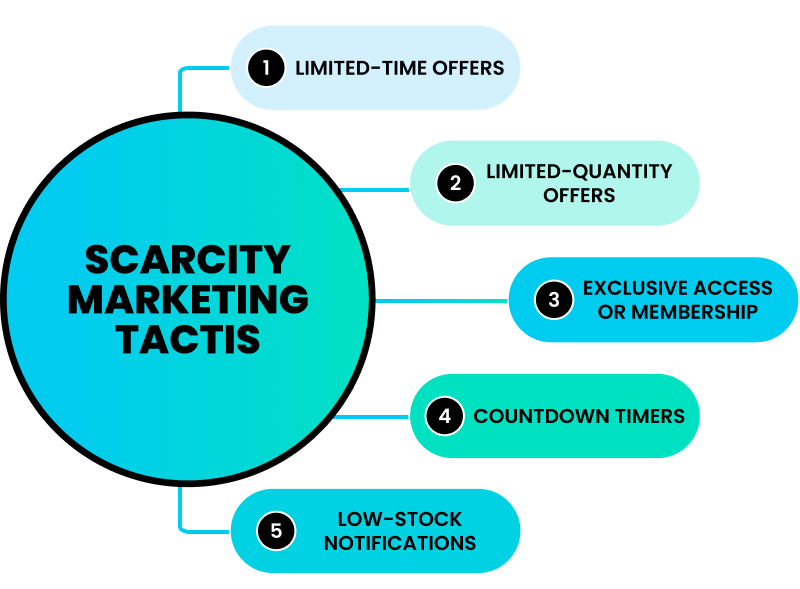How to Design a Sales Process that Delivers
A few years ago, we made a small but powerful change to how we approached our sales process. That simple shift transformed our closing rates, nearly tripling our results and, consequently, our revenue.
So, what changed?
We started focusing on three key areas that most business owners overlook: becoming obsessed with making calls, mastering timely follow-ups, and knowing exactly when to close the deal. It sounds simple, but as a marketing agency that works with multiple industries, we can confidently say that most businesses have no clear sales process in place.
Today, we’ll break down each step to show you how these changes can bring steady, scalable results for you to close deals in your business. And don’t worry! This isn’t about turning on the charm or pressuring anyone into a quick decision.
It’s about understanding and adding value at every stage of the conversation. We’re focusing on clarity, trust, and consistency. We will show you how to engage with each potential client in a way that keeps the conversation flowing toward one goal: helping them make a confident decision.
It’s really that simple. Sales become straightforward when you understand what you are offering and the value it brings to your potential clients. Most importantly, what do you need to do to become a gun at this process?
We can summarise it in one sentence – “Your job is to bring your prospect to a conclusion that you are the ultimate solution, not through telling them but through asking the right questions”
Now, let’s break down what that means into 5 key takeaways so you can start closing more deals immediately.
Shift from Chasing Leads to Attracting Them
Before we jump into the sales process, let’s quickly cover how to generate leads, specifically how the experts do it.
The tough truth is most business owners waste time chasing leads who are either uninterested or not ready to buy. But the real goal is to attract qualified leads. Can you tell the difference? Instead of scrambling to get in front of every prospect, you want to pull in those who already have an interest in what you are offering.
Nobody likes being sold to; people prefer finding solutions on their own. Your goal is to be a guide, not a salesperson, leading them to what they already need without feeling forced.
Now, to get them through the door, it’s essential to focus on crafting a powerful lead-generation strategy that captures attention and provokes interest. We recommend using effective lead magnets for business-to-business (B2B) clients and attractive offers/sales for business-to-customer (B2C) customers. These two approaches are timeless; let’s elaborate.
- For B2B, a lead magnet is a resource that educates or assists prospects, building trust and positioning your brand as an authority. Examples of successful B2B lead magnets include industry reports, practical guides, and free consultations that address specific challenges your target audience faces. These magnets start the relationship by by engaging potential clients and encouraging them to learn more about your brand, all while getting value they seek.

- For B2C, however, the focus is typically on creating compelling offers that resonate quickly with the consumer’s needs and desires. These can include discounts, free trials, exclusive deals, or limited-time promotions. An effective B2C offer should grab attention and spark immediate action while creating an entry point for ongoing engagement.

Understanding the buyer’s journey and the lead’s “temperature” (cold, warm, or hot) is crucial for crafting a lead strategy that moves them from interest to purchase. Let’s expand on temperature.
- Cold leads have no prior interaction with or are unfamiliar with your business. They may have just discovered your brand. They are often attracted by the lead magnet or offer itself and are in the earliest stage of awareness. For these leads, the focus should be on building familiarity and trust without pushing for an immediate sale.
- Warm leads are more engaged. They may have interacted with previous content, visited your website, or followed up on your storytelling offer. They are usually receptive to outreach from your sales team. Here, the strategy should deepen engagement by providing more targeted information or a small commitment offer, such as a demo or consultation, that gets them closer to a decision.
- Hot leads are those who have shown strong interest, possibly by returning to your site multiple times, expressing specific needs, or signing up for a more involved experience. They are on the edge of conversion, and a personalised approach addressing their immediate concerns or hesitations can help turn interest into a sale.

By categorising leads and understanding where they are in the cycle, you can tailor your approach to each stage. This strategic foundation is essential before implementing any management system for your sales process,, which typically leverages a CRM system.
A CRM becomes a powerful tool only when you have a well-defined lead-generation process in place. It helps you catagorise your leads and set the path for a clear follow-up and nurturing process.
In the beginning, it is key to plan a lead generation strategy that attracts and nurtures leads with specific, strategic offers or lead magnets catering to both cold and warm lead temperatures. Once this groundwork is laid, CRM integration can support your strategy, keep engagements organised, segment audiences, and maintain proactiveness across the sales cycle. This approach not only drives better conversion rates but also creates a stronger foundation for long-term client relationships.
To give you a clear picture, take a look at how our direction shifted:
- We stopped sending generic cold outreach emails and advertising our service directly on Google Ads. Instead, we shifted our focus to building a high-value funnel that naturally attracted the right customers.
- Through online channels, we offered resources like free downloadable guides, informative YouTube videos and articles on our website. At the same time, we reinforced our approach through in-person efforts: attending local networking events in Cairns, participating in industry meetups in Sydney, and hosting workshops.
- We refined our buyer persona to better understand exactly who we wanted to attract and crafted our messaging to speak directly to their pain points and desires in a way that we can help solve them.
By combining online and face-to-face strategies, we created a system that brought clients to us rather than pushing our offer in front of them.
So, first things first: refine your funnel with well-crafted lead magnets and get clear on who your ideal client is. With this foundation, the dynamic shifts. You are no longer “selling” but instead guiding potential clients toward you and towards the next step to get in touch with your business.
Your Sales Process Should Start with a Call
Objective: Establish Rapport and Spark Interest
Ok, now that your funnel is bringing you a list of potential clients, it’s time to reach out. The first interaction with a prospect sets the stage for the entire sales process and the relationship moving forward. The goal is to make a solid first impression and gain their attention in a way that feels natural and helpful.
Studies show that calls bring a unique human element to the conversation, making it easier to build rapport and establish trust quickly. Unlike emails or automated messages, a phone or video call makes the interaction feel more like a friendly chat and less like a sales pitch.
Do you sound like a salesman within the first few seconds? Probably. Make sure you plan your first few sentences wisely. For example, “Hey [name], I noticed you downloaded our [lead magnet] on [day/date]. I am just calling to check if it was helpful to you?” this opening works wonders because it doesn’t sound like a generic sales call, you end on a genuine question, rather than “how are you” and you are positioning yourself as someone looking for information rather than a sales guy that sound like they are following a script.
At this stage, remember that asking questions is essential. Thoughtful questions help you better understand the client and their needs, laying the groundwork for a meaningful connection. After all, without knowing the real problem, how can you provide the right solution? Plus, by asking questions, you’re often the one guiding the conversation, allowing you to keep the interaction focused and productive.
Keep in mind that this stage isn’t about making a hard sell; it’s about creating an authentic connection and truly understanding their needs.
Best Practices for Engaging Prospects
- Energy and Presence: Approach each call with enthusiasm. Prospects can sense when you’re genuinely engaged versus when you’re just going through a script. Think of it like a live interaction; bring energy to every call to keep it genuine and engaging.
- Respect for Time: Cold calls interrupt people’s day, so always show respect for the other person’s time. Start by asking if it’s a good time to talk.
- Opening Techniques: Once you introduce yourself, use impactful openers that speak to their specific challenges. For example, if you are selling cybersecurity solutions, ask: “How are you currently protecting your business from online threats?” Followed by, “I’d love to share some strategies that have helped other businesses like yours stay protected.” Or let’s say you are selling employee training programs, ask: “How are you currently addressing skill development in your team? I’d love to share some approaches that have helped other companies upgrade performance and retention.”
- Simplified Scheduling: Make it easy for prospects to book a follow-up. Don’t ask them when they are available! Offer specific times instead: “Would Tuesday or Thursday work better? Morning or afternoon?” This reduces their decision fatigue, allowing them to engage and make decisions without overthinking.

A crucial point to keep in mind: always ensure the person you’re speaking to has enough time to fully listen to what you have to say. If they are in a rush or distracted, you must reschedule for a time when they can give you their full attention. This way, you will both have a better shot at engaging meaningfully.
And don’t forget video calls are a huge advantage! Being able to put a face to the voice takes the conversation to the next level. Speaking on the phone is effective, but seeing each other on a video call makes the interaction feel more real. Plus, having that visual connection can make your potential client feel valued.
Real-World Example: Marketing Agency – Mindesigns
When a lead downloads our free online resources, we know the prospect has an interest in improving their digital marketing. Because that’s what our resources are designed to do. They might want to increase sales, improve their website, etc. Once they download our lead magnets, their contact details are recorded in our CRM. From there, we take action. We start reaching out by calling them.
As you can see, we take the initiative in offering value first.
When a potential client downloads our ChatGPT marketing strategy guide, their interest signals they’re open to learning more, and we immediately acknowledge this in the call: “How did you go with our marketing strategy guide?, I wanted to reach out and see what was your experience and if you need guidance with it”.
By mentioning that they received something from us (the guide), we tap into the Law of Reciprocity—people naturally feel inclined to give something back when they’ve received value first. This makes them more open to engaging in a conversation with us.
Instead of jumping straight into a sales pitch, we ask for their opinion. This shifts the conversation from a hard sell to a collaborative exchange, making the client feel heard and respected. By doing so, we create a more relaxed, genuine environment that builds trust and encourages them to share their needs and challenges, allowing us to tailor our solutions to fit them.
As we reach out, we bring enthusiasm to each call by offering further support. We make it clear that we value their time. Then, we ask open-ended questions focusing on their current challenges, such as, “How are you managing your digital marketing efforts? What are your current business goals?”.
We set the stage for a conversation that’s both informative and supportive, with a tonality that feels calm and a cadence that allows them time to reflect and respond. Rather than a one-way pitch, we ask for their opinion and respond with valuable insights, creating a friendly exchange. This reciprocal approach demonstrates our commitment to helping them succeed.
To help them stay engaged, we streamline the scheduling for a more in-depth video call. By offering specific time options, we make it easier for them to choose and reduce any friction in booking a follow-up. This approach keeps the process clear and client-focused, enabling a meaningful connection while keeping things effortless on their end.
We find that this approach works well across various industries. For example, some clients use pop-ups for clearance sales as lead magnets, attracting customers interested in exclusive deals. In these cases, they start the conversation by asking, “I noticed you were interested in our clearance event. How can we help you take advantage of those offers?”
Another example comes from a law firm offering a downloadable guide, such as “Your Rights in the Workplace.” Here, we could begin with, “I saw you downloaded our ‘Workplace Rights’ guide. Do you have any questions about the information, or is there something specific you’re looking for help with?”
Objective: Make Your Calls Frictionless
Ever since we stopped waiting for leads to convert magically and started using a strategic approach to turn prospects into paying customers, we’ve increased our sales by 3x without adding more hours to our workday.
The good news is you can do the same.
A complicated, extensive sales process is a sure way to lose a prospect. The smoother and easier your sales process is for your customers, the more likely they are to follow through and close the deal. In fact, one of the best ways to ensure a frictionless experience is to handle the details for them. For example, avoid asking them to book a call through a link. Instead, confirm a time with them.
People used to drop off in our sales process because it was too complex. So, we streamlined our offer to be clear and easy to understand at a glance, without repetitive jargon—just a straightforward explanation of how we could help them solve their problem and our pricing.
We recognised that during calls, instead of overwhelming prospects with reports or case studies, it is far more effective to show examples and talk them through results right there. This keeps their attention and lets them experience the value firsthand.
The goal is to minimise obstacles at every step. Make it easy for them to say “yes” from the initial interaction to the moment they make the purchase.
Follow-up and Keep the Sales Process alive
Objective: Keep Engagement by Building Trust
Once initial interest is established on the phone or via video call, follow-up becomes crucial. Staying top-of-mind without overwhelming your prospect keeps the relationship warm and shows them you’re invested in solving their problems.
Effective Follow-Up Tactics
- Timely Touchpoints: YOu can avoid follow-ups altogether by booking your prospect for another call where you can offer more value. You will have to think about what is a good reason to do so, obviously, but if done right. You will open another opportunity for you to communicate and try to persuade them to buy. If you didn’t close a follow call, don’t wait too long after your initial call to follow up. Aim for within 48-72 hours, using a mix of communication methods (phone, email, or text) to show persistence without being intrusive.
- Consistent Engagement: remember, balance is key. Too many follow-ups can turn potential clients off, while too few might leave potential opportunities unexplored. A follow-up range of 2-5 times is ideal, depending on the situation and the level of initial interest shown. Being different in your approach can also make your follow-ups stand out, whether it’s varying your communication style, sharing unique insights, or even switching up your method. If you get a clear “no,” it’s best to respect their response and stop reaching out. No one likes to feel pressured.
- Position Yourself as the Sole Solution: Be confident that your solution is precisely what they need. Emphasise how it is uniquely suited to address their challenges without directly comparing it to competitors. Focus on logical information that clears any uncertainties about how your solution can help.
Seal the Deal with Confidence
Objective: Guide the Prospect to a Confident Decision
This is where it all pays off. Closing is all about guiding your client toward a decision they already want to make.
After multiple touchpoints, it is time to move toward closing the deal. This stage requires skill in addressing any last-minute hesitations and positioning the decision as a clear next step toward their goals. This is the most critical part of the sales process.
Key Elements to Wrap Up a Successful Call
- Handle Objections Before They Arise: If you know your client’s main concerns, address them before they even ask. Budget constraints? Timing issues? Get ahead of these with genuine answers and solutions. This way, you clear the path for a smooth “yes” without doubts. At the end of the day, if you see clear value in your offer, your job is to help your client get to that conclusion as well. Not by telling them, but by asking them questions that will lead them to that conclusion. This is probably the most important tip in this article, hands down.
- Ask for the Sale with Confidence: When it’s time to close, be clear: “Are you ready to move forward?” When you are confident in what you offer, it makes it easier for your client to be confident, too. It’s all about timing and understanding where your potential client is in the sales process.
- Encouraging Decision Clarity: Use targeted questions to prompt prospects to express their decision readiness. For example, ask, “Is there anything stopping you from moving forward today?” or “What do you need to feel confident about taking the next step?”
- Highlighting Value and Return on Investment: Reinforce the benefits and long-term value they will receive from working with you. If they are hesitating over costs, redirect the conversation to ROI, asking, “What would achieving your [goals/results] be worth for your business over the next six months?” “Do you see your business getting there with the way it is currently operating?”
- Limited Offer: This approach uses the scarcity principle, which highlights that people are more motivated to act when they perceive something as limited or exclusive. It’s about helping them recognise an excellent opportunity while it’s still available. This friendly reminder encourages them to make a confident decision, knowing they’re securing something valuable before it’s gone.
It is essential to use this principle responsibly and ethically. Creating artificial scarcity or misleading urgency can harm trust and damage relationships with your leads. Focus on genuine opportunities that benefit your clients. This will encourage timely decisions while maintaining transparency and building long-term trust.
Objection Handling During Your Sales Process
Objections are natural and often indicate genuine interest. Responding calmly and constructively builds trust and can turn a hesitant prospect into a committed client.
Example of Techniques to Handle Objections
- Clarify and Validate: Show that you understand their concerns by actively listening and validating their point of view. Try saying, “I hear you. Many clients had similar concerns initially, and here’s how we addressed them…”
- Assigning Cost to Inaction: Frame the objection in terms of what they stand to lose if they don’t act. For example, instead of asking, “Do you think your current solution will help you grow in the next 6 months?” ask, “If you stick with your current strategy, do you think you’ll hit your $800,000 sales target this year, or will you miss out on that growth?” By making the cost of inaction clear, you’re showing them that sticking to the status quo could cost them big in missed opportunities.
- Build Trust with Social Proof: Leverage testimonials or case studies to address objections indirectly. For example, if a prospect hesitates about implementation challenges, you might say, “That’s a great point. One of our clients, a company similar to yours, had the same hesitation. After implementing our solution, they found the process smoother than expected, saving them both time and resources. I’d be happy to share more about their experience.”
The Key to a Successful Sales Process
Mastering the sales process involves persistence, personalisation, and a deep commitment to the prospect’s needs. By focusing on Calling, Follow-Up, and Closing, while perfecting Objection Handling, you’ll build a process that consistently converts leads into clients.
Remember, every call is an opportunity to connect, every follow-up is a chance to add value, and every closing conversation brings the prospect closer to solving their problem with your help. With each step in this guide, you will make sales conversations smoother, more natural, and more successful, helping you stand out!
Happy selling!






















































